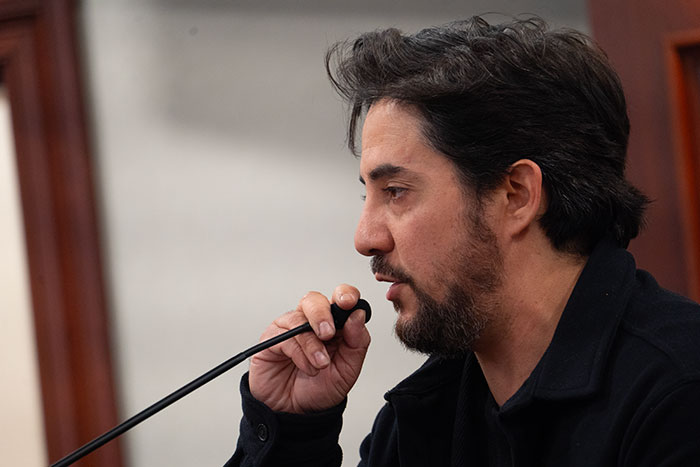Group petitions for other options for pine tree removal near The Club
Their trees’ fate may be on the line, but residents of the Claremont Club neighborhood haven’t given up hope.
On Tuesday, March 26, the Claremont City Council will consider the removal of 59 pine trees, some towering 50 feet, along the city’s Club housing tract, located adjacent to Claremont Boulevard and Monte Vista.
A petition from a group calling itself “Protect Claremont Trees” began circulating last month as locals fervently call on others to help stop a proposed tree replacement program from taking away the character of their Claremont Club neighborhood.
“Isn’t Claremont the City of Trees and PhDs?” questioned Club resident Tonya Bennitt. “If it was going to be one or 2 trees removed, even 10, I wouldn’t have even made a phone call. But 59? That’s excessive.”
Ms. Bennitt says the expanse of lofty green pines are what drew her to the Club 9 years ago.
“You turn off of Claremont Avenue and you head into the Club area and just take a deep breath of relief and comfort,” she said, adding that the pine trees that greet visitors near the entrance of the Club are not unlike the characteristic trees that define Indian Hill Boulevard.
Her sentiments are mirrored in the petition by Protect Claremont Trees, which currently has 28 signatures on Change.org. The group goes further in stating that the removal of the trees and the proposed tree removal program—calling for a tree evaluation every 4 years and the systematic removal of any trees found damaging hardscape—is in violation of the city’s tree policy.
“Recognizing that trees are an important community asset that take a generation to reach maturity, the city of Claremont has adopted a set of Tree Policy Guidelines that include specific conditions under which a city tree that is damaging hardscape can be replaced,” the group writes. “The Tree Policy Guidelines state that a tree can only be removed if a certified arborist inspects the tree and concludes that its health or stability would be compromised if its roots were ground or pruned in order to accommodate hardscape repairs.”
Stacey Cuevas, community and human services manager with the city of Claremont, says issues with the health and stability of the towering pines at the Club have been ongoing since 2005.
“There is only so much root pruning you can do before you jeopardize the stability of the tree,” Ms. Cuevas said.
Then there were issues with the tree roots and infrastructure. In addition to uprooting sidewalks and other hardscape, roots were causing damage to driveways and piping to the tune of about $34,000 in damage claims to the city, according to Ms. Cuevas.
In 2005, a third of the trees were removed from the neighborhood in an attempt to manage the issues, but problems continue to persist. With expenses to try and fix the problem now at an estimated $470,859, Ms. Cuevas felt something more extensive needed to be done.
“We looked at the long-term and had to come up with several proposals on how to address the issues of long-term damage,” she said. “For safety purposes, we felt the trees needed to be removed.”
The community and human services commission plans to fix the damaged hardscape once again this summer for an estimated $167,060. Before the project begins, they hope to remove the identified pine trees.
The Claremont City Council is tasked with the final say in the project, and the community and human services commission added their advice to the council at its February 6 meeting. While the commission did recommend the removal of any of the trees with roots causing significant damage, the commission unanimously advised the council to reject adopting a tree removal program. The commission felt the city should stick to the plan already outlined in its Tree Policy and only remove those trees causing substantial damage.
Acknowledging the mixed feedback on the tree removal, Ms. Cuevas says that new trees will be planted to replace those removed. Not all will be the beloved pines, though. Each neighborhood will be designated a species, according to Ms. Cuevas. She also pointed out that not all of the 59 trees removed would be replaced in the same exact spot.
“It may be that one of the pine trees had been placed within 3 feet of a water meter,” Ms. Cuevas explained. “We don’t want to repeat that mistake.”
While promised that trees will be replaced, Ms. Bennitt is not consoled over the loss of her beautiful pines. She hopes the council will reconsider.
“I just don’t think it reflects the community spirit that Claremont wants to reflect,” she said. “We are supposed to be cutting-edge in terms of green and nature and all that, and this does not fit that philosophy.”
—Beth Hartnett
news@claremont-courier.com










0 Comments